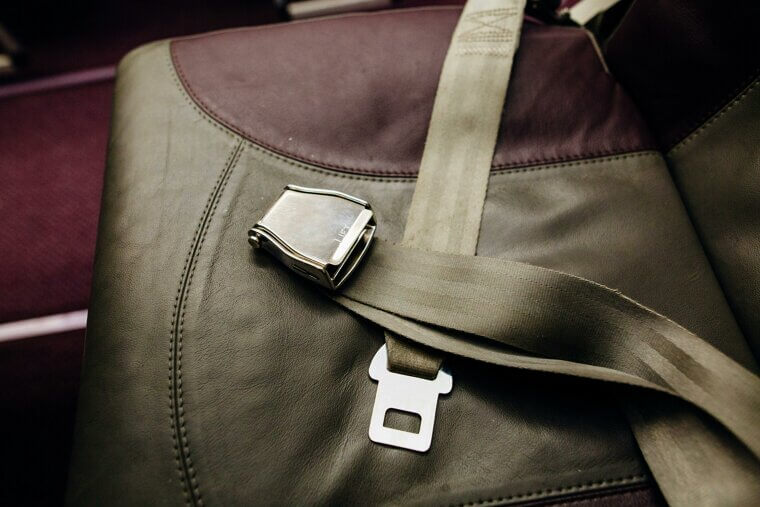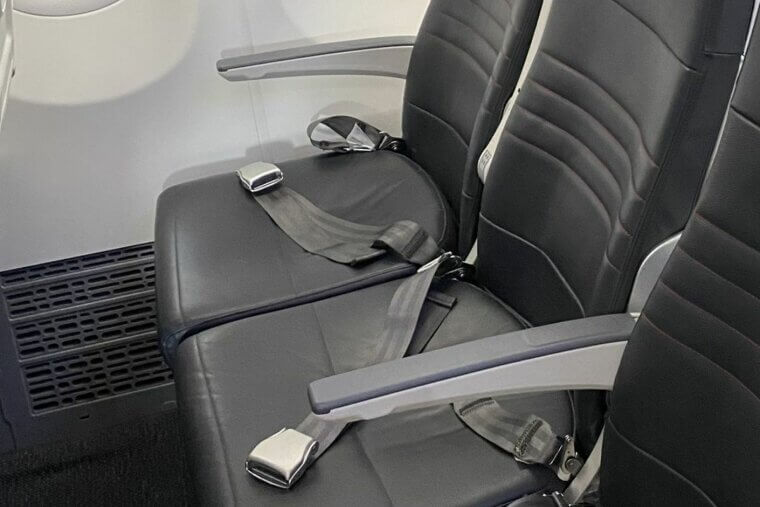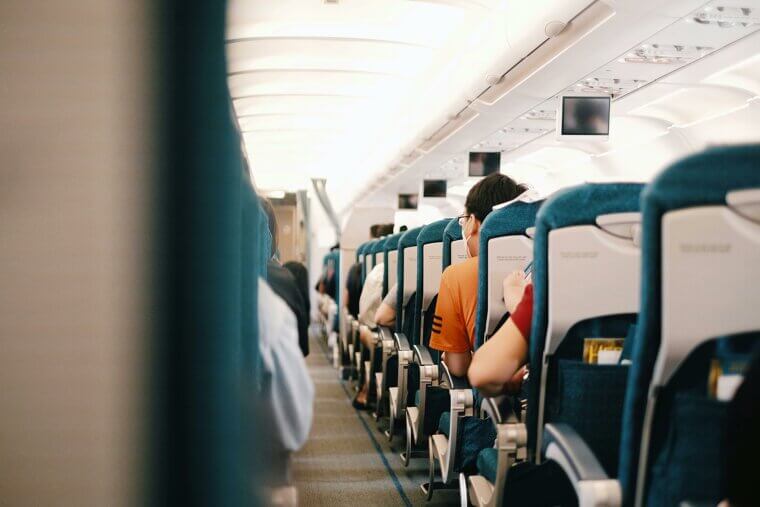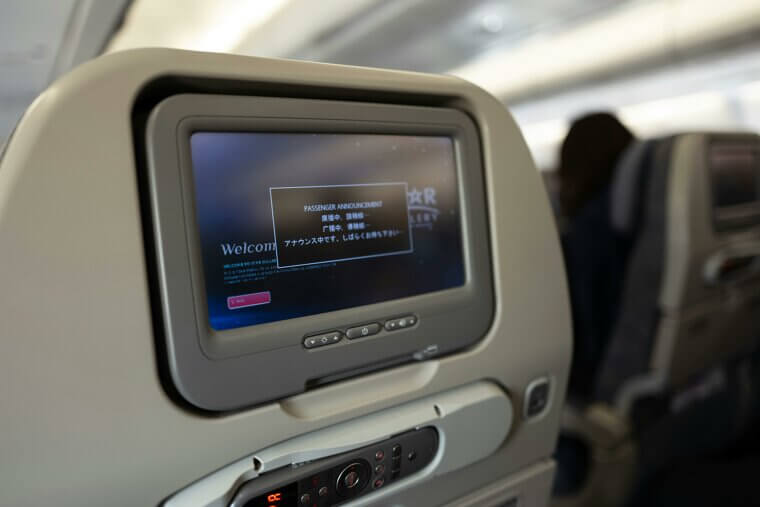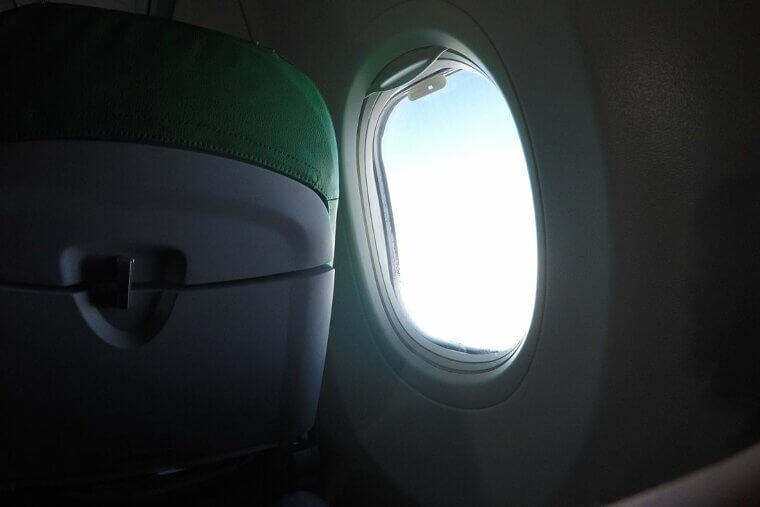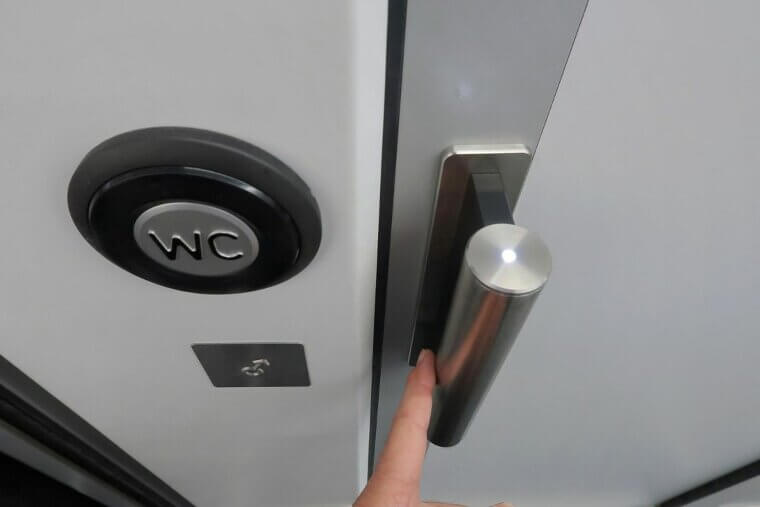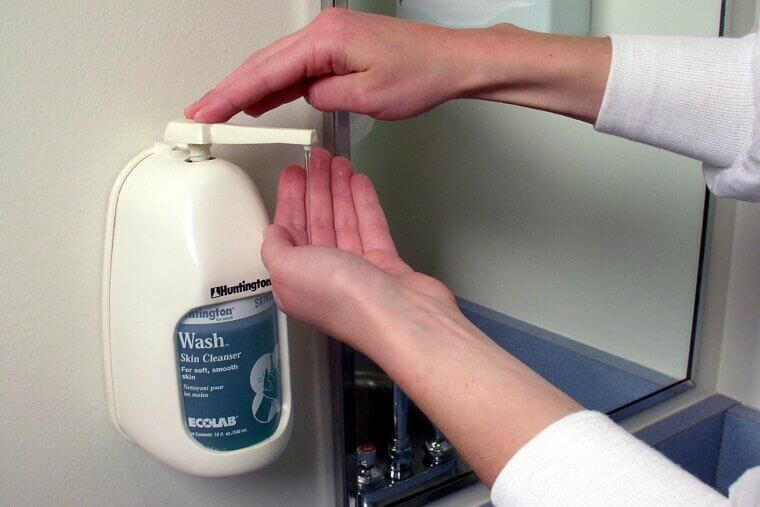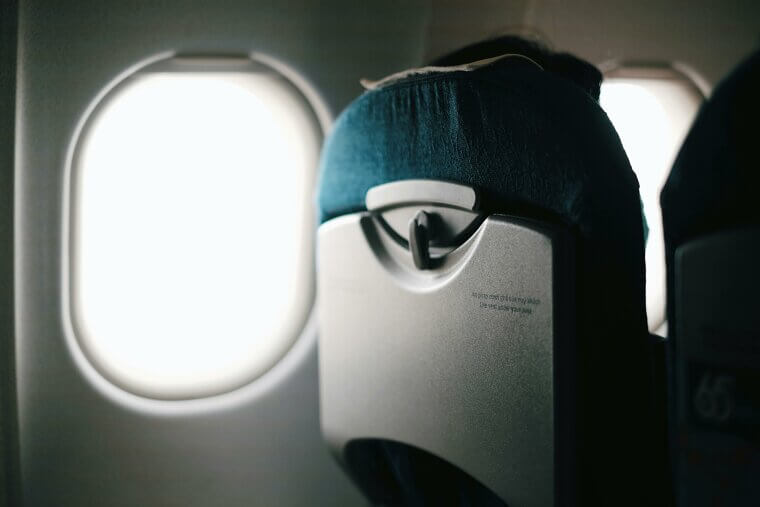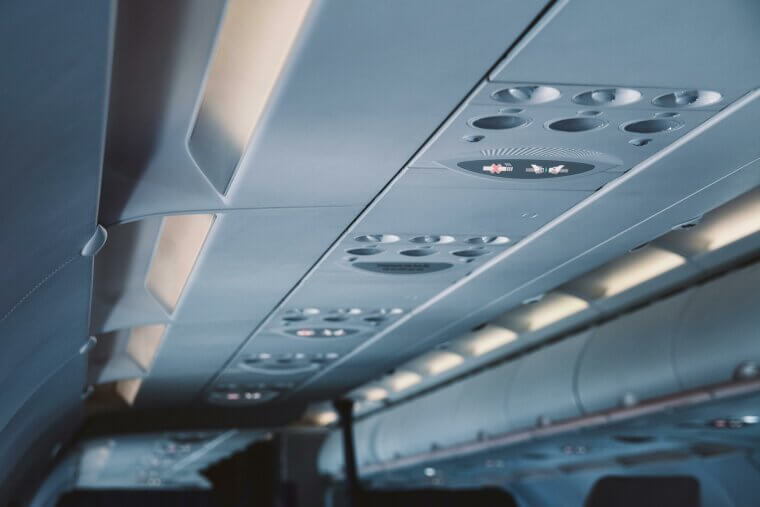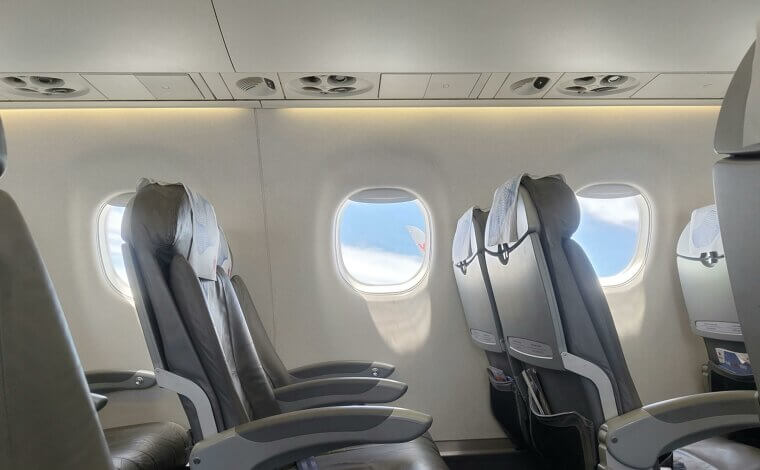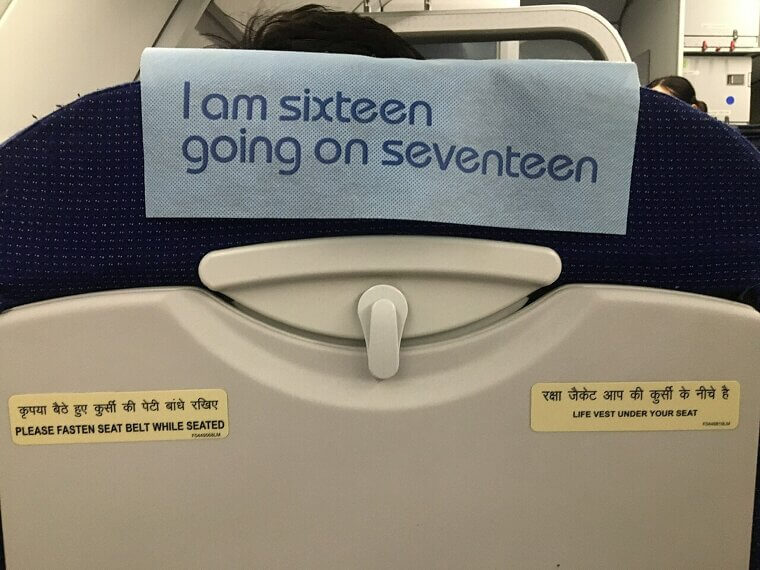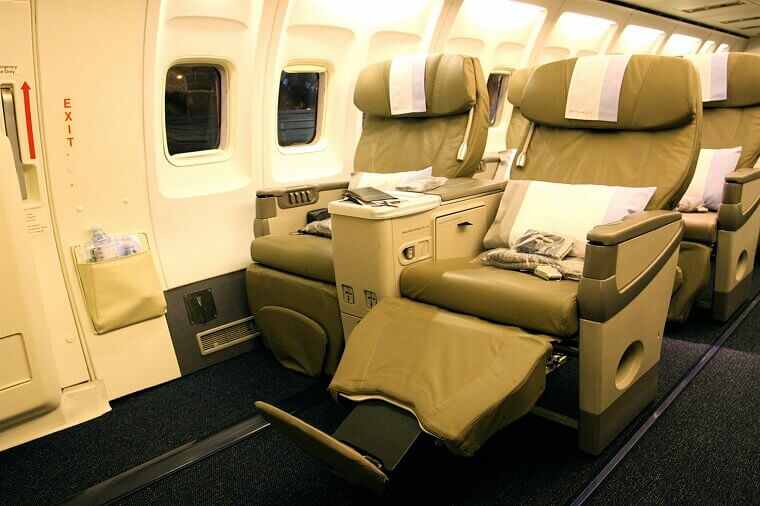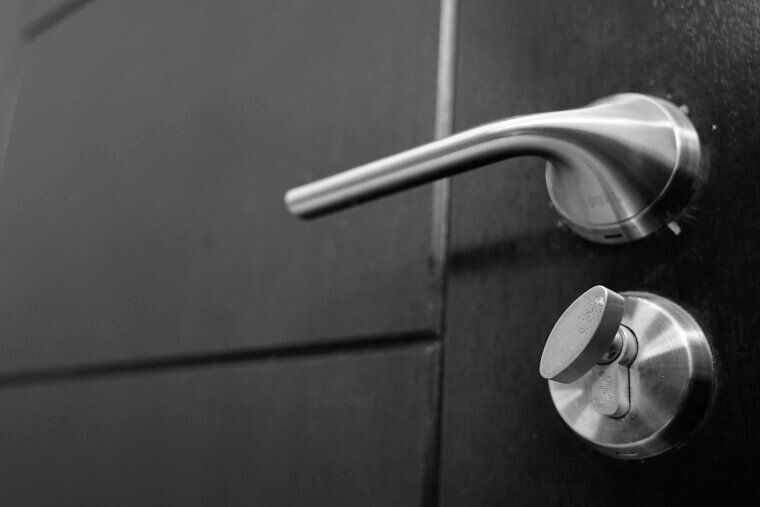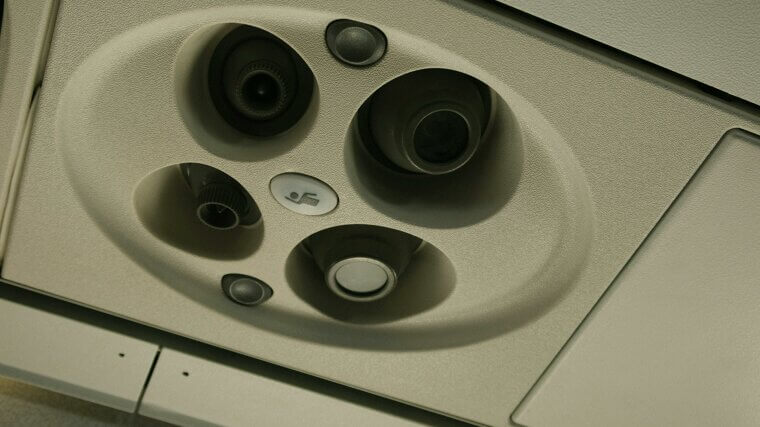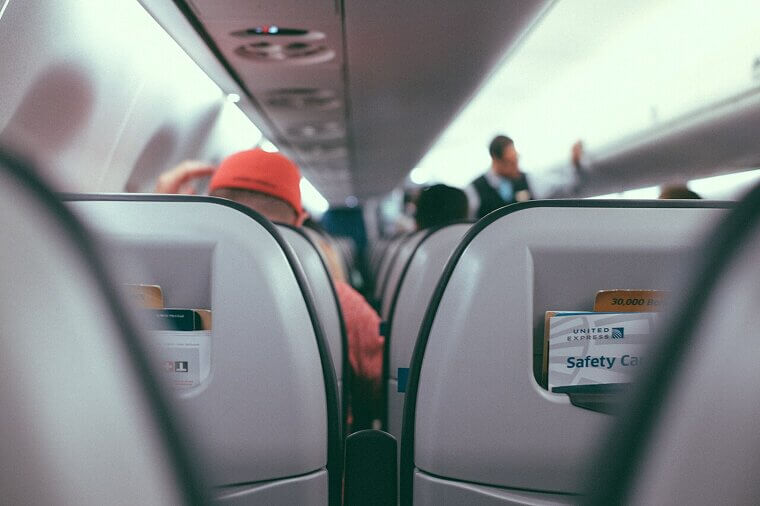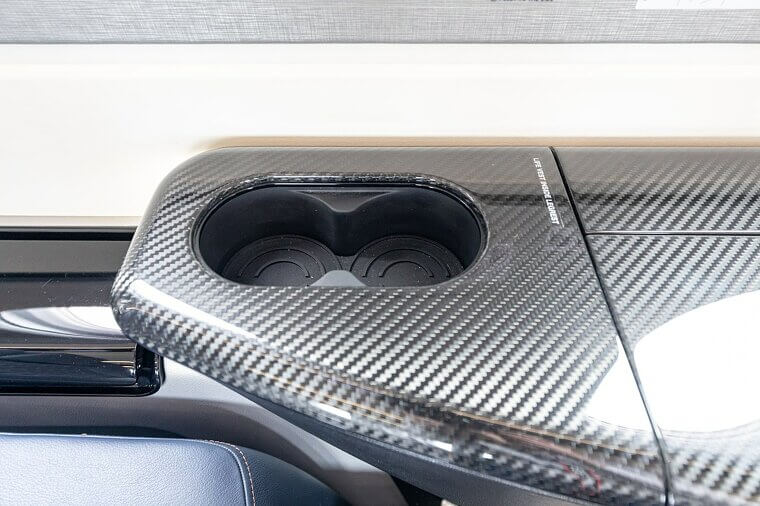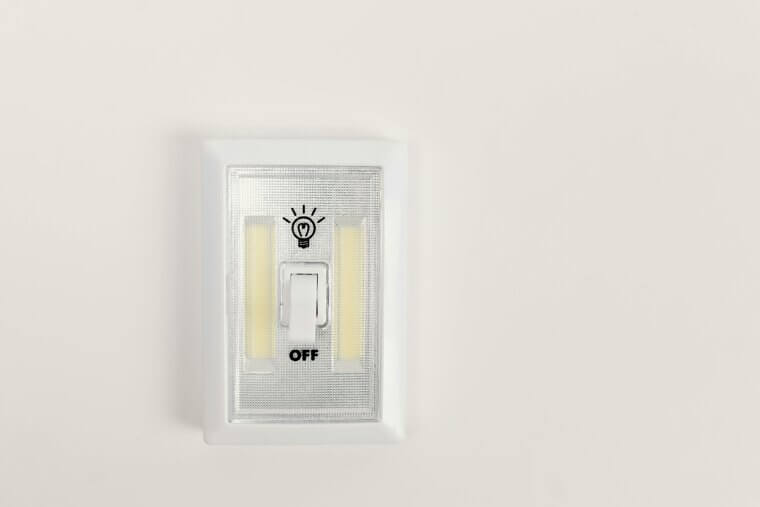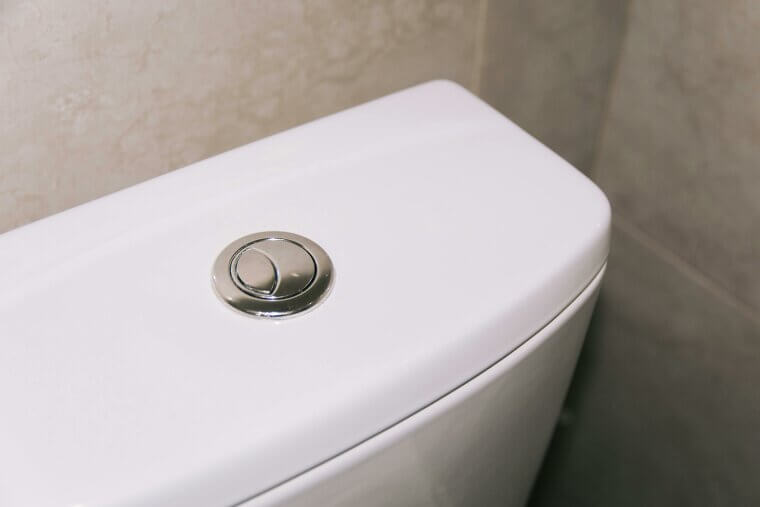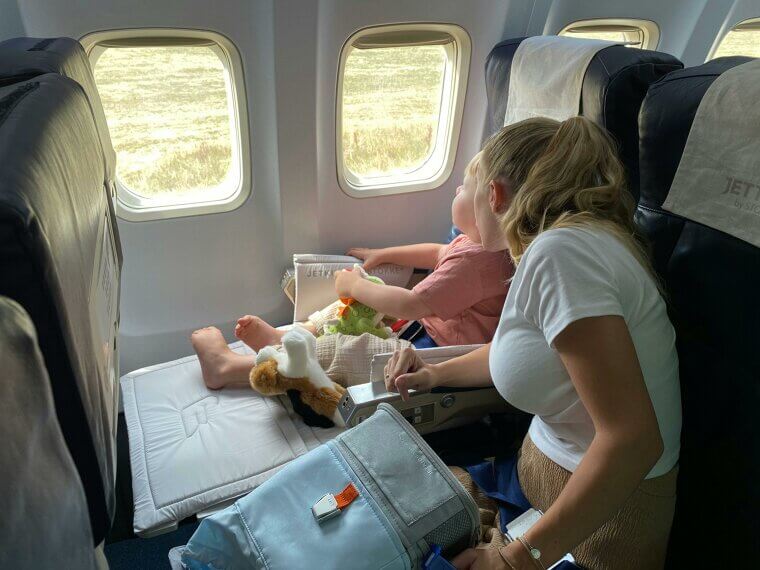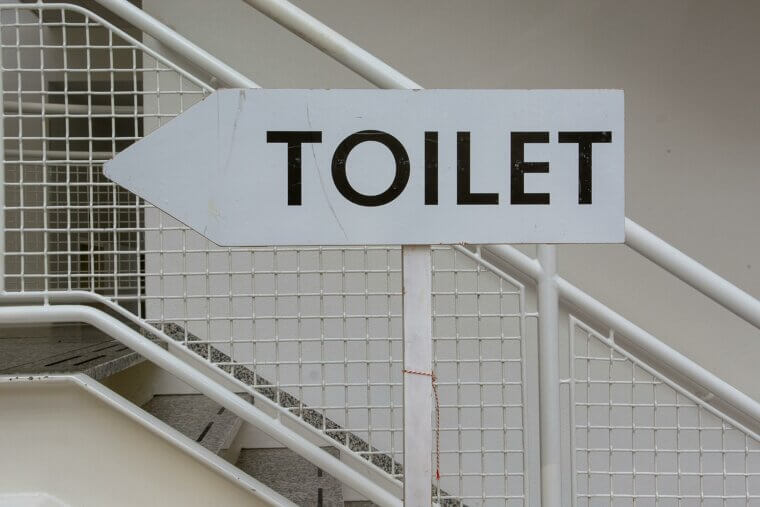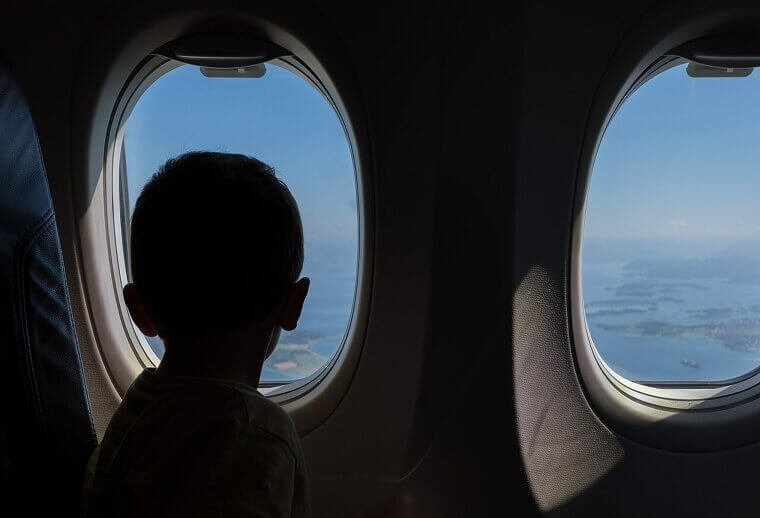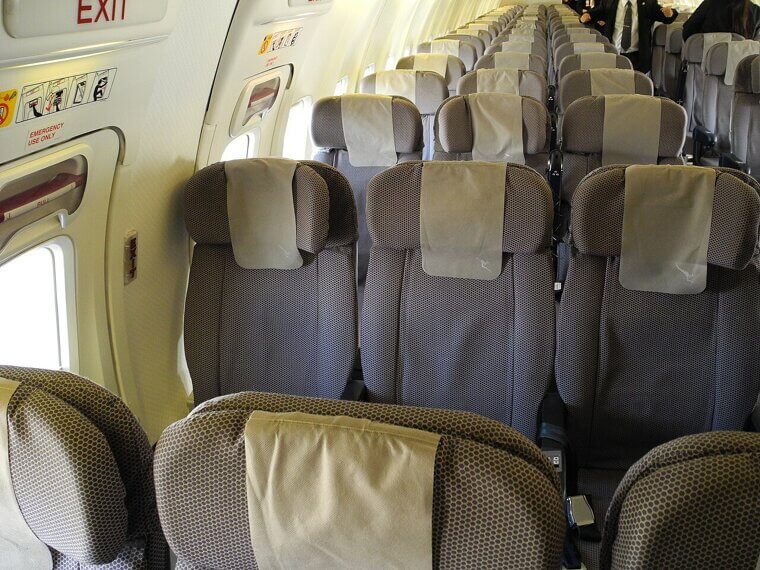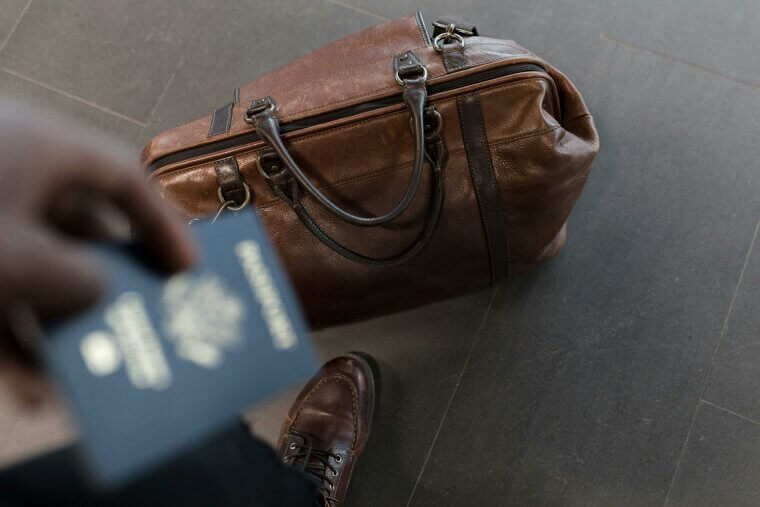Tray Tables
One of the dirtiest surfaces on an airplane is the tray table. They are a breeding ground for germs since they frequently come into contact with food, beverages, and personal belongings. Using a disinfectant wipe to clean your tray table will help lower bacterial exposure and make your travel area safer and cleaner.
Seat Belt Buckles
Passengers often touch seat belt buckles, which are ideal locations for bacteria and pathogens. Before putting on your seat belt, clean the buckle and its surroundings with a disinfectant wipe. By taking one easy step, you can lower your chance of getting sick and help create a cleaner flying environment.
Armrests
Because people regularly contact the armrests during flights, bacteria and germs thrive there. You and your fellow passengers can ensure a cleaner, more enjoyable trip by using a disinfectant wipe to clean the armrests and reduce the spread of infections.
Seat Back Pockets
Seat back pockets are a breeding ground for bacteria and germs since they are used to hold personal belongings, periodicals, and safety cards. Using a disinfectant wipe to clean the interior and outside of the seat back pocket will help reduce the spread of infections and make your flight safer and cleaner.
Overhead Air Vents
As passengers often adjust the overhead air vents, bacteria and germs thrive there. In order to reduce the spread of infections and guarantee cleaner, safer air circulation during your journey, clean the air vent with a disinfectant wipe before using it.
Touchscreen Entertainment Controls
Many passengers utilize touchscreen entertainment controls, which makes them a haven for bacteria and pathogens. Use a disinfectant wipe to clean the touchscreen of the entertainment system before using it. This little action can guarantee a cleaner, more pleasurable, in-flight entertainment experience while lowering the risk of disease.
Window Shades
Passengers regularly manipulate window blinds, which makes them the perfect place for bacteria and germs to culminate. Before adjusting the window shade, wipe it off with a disinfectant wipe to reduce the spread of infections and make your travel environment safer and cleaner.
Lavatory Door Handles
Many people touch the handles of restroom doors throughout a trip, making them ideal locations for bacteria. Cleaning the handle with a disinfectant wipe before and after use can ensure a cleaner, safer environment in the airline restroom and reduce the transmission of infections.
Soap Dispensers
Soap dispensers in airline restrooms are dirtier than you may think due to frequent passenger use. To reduce the transmission of infections and guarantee a cleaner, safer environment for handwashing throughout your flight, clean the dispenser with an antimicrobial wipe before using it.
Sink Surfaces
In airline restrooms, sink surfaces are frequently in contact with passengers and are splattered with soap and water. Cleaning the sink area with a disinfectant wipe can help reduce the spread of bacteria and germs, making the place safer and cleaner for handwashing and general hygiene while flying.
Toilet Seats
As a high-contact surface that people use often, airplane toilet seats are likely the dirtiest place on an airplane. A cleaner, safer environment in the airline restroom can be ensured by using a cleaning spray to clean the toilet seat before using it. This will help reduce the spread of infections.
Tray Latch Handles
Because every passenger uses and touches their tray latch handles, it is easy to contract sickness from its dirtiness. To reduce the transmission of infections and guarantee a cleaner, safer environment for your in-flight activities, wipe the latch handles on your tray table before using it. This can make your trip more enjoyable overall.
Overhead Bin Handles
When storing and retrieving luggage, passengers often touch the handles of overhead bins, which is a common location for bacteria and germs. To reduce the transmission of viruses, wipe the bin handles before handling your luggage.
Overhead Bin Edges
Travelers often touch the edges of overhead bins as they store and retrieve their belongings, which makes them a typical location for bacteria and germs. To reduce the transmission of viruses, clean the edges of your luggage before handling it.
Headrest Adjusters
Headrest adjusters are a typical place for bacteria and germs to grow as passengers touch them to find a comfortable position. By cleaning the adjusters before use, you may reduce the transmission of infections and make sure your trip is safer and cleaner. This action makes the flight more hygienic and comfortable.
Seat Recline Buttons
Passengers regularly touch the seat recline buttons to change their seating positions, which makes them a typical place for bacteria and germs to grow. Cleaning the buttons before use can reduce the transmission of infections and ensure a safer and cleaner environment.
Magazines and Safety Cards
Reading materials and safety cards are kept in magazine holders in the back pockets of airplane seats, where bacteria and germs frequently reside. Cleaning them before use can reduce the transmission of infections and ensure a safer and cleaner flight.
Lavatory Door Locks
As they are frequently handled after passengers use the restroom, bathroom door locks are among the dirtiest surfaces on an airline. They are a good location for germs because of their high touch frequency. Cleaning them both before and after use contributes to a safer environment by reducing the spread of infections.
Call Buttons
Aircraft call buttons are repeatedly used by passengers in need of help, which makes them a common location for pathogens to grow, making it easier for you to get sick. You may reduce the transmission of infections and guarantee a cleaner, safer travel environment by cleaning the buttons both before and after use.
Personal Device Holders
Tablets and cell phones are kept safe in personal device holders aboard airplanes, which makes them a typical place for bacteria to grow. Cleaning the holders before use can reduce the spread of infections and make your trip safer and cleaner.
Lavatory Light Switches
Being sick on a holiday is not ideal for anyone. To prevent this, you’ll need to make sure you're careful with what you touch. A cleaner, safer atmosphere in the airplane restroom can be ensured by wiping down the surface to clean the light switch both before and after usage.
In-Flight Phone Receivers
Passengers are highly likely to use in-flight phone receivers while on a flight, which makes them a typical location for bacteria and pathogens. Cleaning the receivers before and after use can maintain a cleaner, safer atmosphere during your trip.
Cup Holders
Since cup holders are commonly used to carry beverages aboard flights, bacteria and germs are likely to be present. To reduce the transmission of infections and guarantee a cleaner, safer environment for your trip, clean the holders before putting your drink in them.
Aisle Seat Edges
As they pass, passengers usually cling to the aisle seat edges for support or balance. A cleaner and safer travel environment can be achieved by using a disinfectant wipe to clean the aisle seat edges and help stop the transmission of germs.
Food Tray Holders
Food tray holders are a common location for bacteria and germs because they are often used to secure trays during meals. By cleaning the holders before use, you may reduce the spread of infections and make sure your trip is safer and cleaner.
Light Switch Buttons
Airplane cleaners often overlook high-touch areas like light switch buttons. By cleaning the buttons before and after use, you can reduce the transmission of infections and guarantee a cleaner, safer travel environment.
Flush Buttons
Hundreds of travelers often touch the flush buttons in airline restrooms in between being thoroughly cleaned. Use an antibacterial cloth to clean the flush button both before and after using the toilet. This can guarantee a cleaner, safer restroom environment and lessen the transmission of germs.
Blanket Packs
Airline blanket packs are handled by several passengers and airline employees and are often overlooked by cleaners. Cleaning the packs before use can reduce the spread of infections and ensure a cleaner trip.
Lavatory Faucet Handles
Because passengers touch these handles a lot, bacteria and germs that can quickly cause sickness are often found there. Use an antiseptic wipe to clean the sink's handles before using it. This can guarantee a cleaner, safer environment in the airplane restroom and reduce the spread of diseases.
Pillow Packs
Airline pillow packs are not only touched by several passengers but also by airline employees, which makes them one of the dirtiest places on a plane. By cleaning the packs before use, you may reduce the spread of infections and make sure your trip is safer and cleaner.
Window Sills
Due to frequent passenger contact, airplane window sills are a common place for bacteria and germs to grow. Cleaning the sills before use can help reduce the transmission of diseases and ensure a cleaner, safer travel environment.
Seat Fabric
Aircraft seat fabric frequently comes into contact with passengers and is difficult to clean properly. Cleaning the cloth before use can help ensure a cleaner, safer travel environment and reduce the spread of infections. This action makes the trip more hygienic and, therefore, more enjoyable.
In-Seat USB Ports
Passengers commonly use in-seat USB connections to charge their gadgets and are often ignored in the cleaning process. Maintaining a cleaner, safer environment during your trip can be achieved by cleaning the ports both before and after usage. By doing this, you’ll prevent bacteria from making you ill and ruining your holiday.
Charging Stations
Passengers commonly use airplane charging stations to power their electronics, which makes them a common place for bacteria and pathogens. By keeping the stations clean both before and after use, you may reduce the spread of infections and provide a safer, cleaner travel environment.
Luggage Compartment Handles
Hundreds of guests touch the handles of luggage compartments on airplanes when storing and retrieving their bags. Cleaning the handles before and after use can reduce the transmission of infections and guarantee a cleaner, safer travel environment.

